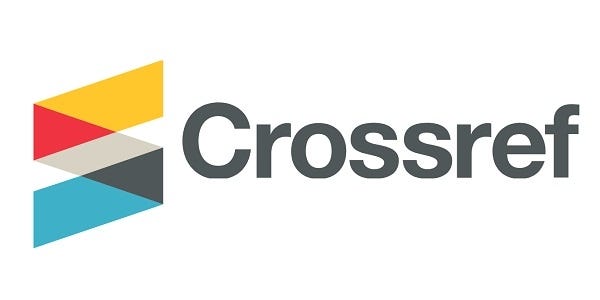Analysis of Coherence and Cohesion in Paragraphs Writing of EFL Students
DOI:
https://doi.org/10.36663/joes.v5i1.966Keywords:
Coherence, Cohesion, Paragraph, Writing, EFLAbstract
This study examines coherence and cohesion in paragraphs written by high school students learning English as a Foreign Language (EFL). Employing an explanatory sequential mixed-method design, data were gathered through cluster random sampling, with one class selected as the study sample. The students’ recount paragraphs were analyzed using both quantitative scoring and qualitative content analysis to capture a comprehensive understanding of their writing skills within the EFL context. The results revealed a high level of coherence, with an average score of 83, indicating that students were able to organize ideas logically and connect sentences clearly. These findings underscore the critical role of EFL educators in developing students’ mastery of coherence and cohesion, which are essential for effective writing. The study highlights the importance of teachers possessing strong evaluative skills to identify strengths and weaknesses in student writing, thereby enabling targeted instruction that can enhance writing proficiency in EFL settings.
Downloads
References
Alsariera, A. H., & Yunus, K. (2023). Issues and Challenges in the Use of Coherence Among Jordanian EFL Students in Writing Academic Essays. Journal of Nusantara Studies (JONUS), 8(2), 141–156. https://doi.org/10.24200/jonus.vol8iss2pp141-156
Arta, G. J., Ratminingsih, N. M., & Hery Santosa, M. (2019). The effectiveness of blended learning strategy on students’ writing competency of the tenth grade students. JPI (Jurnal Pendidikan Indonesia), 8(1), 29. https://doi.org/10.23887/jpi-undiksha.v8i1.13501
Darussalam, A., & Fahrinawati, F. (2023). Improving Students Grammar Competence through Discovery Learning for Islamic Education Program. The Art of Teaching English as a Foreign Language (TATEFL), 4(2), 81–92. https://doi.org/10.36663/tatefl.v4i2.633
Dwihandini, L. A., Marhaeni, A. A. I. N., & Suarnajaya, I. W. (2013). The Analysis of the Factors Affecting Undergraduate Students ’ Difficulties in Writing Thesis in the English Department of Mahasaraswati. E-Journal Program Pascasarjana Universitas Pendidikan Ganesha, 2, 1–12.
Erlangga, I. P. B., Suarnajaya, I. W., & Juniarta, P. A. K. (2019). An Analysis of Grammatical Errors Made by The Seventh Grade Students of SMP Negeri 2 Sukawati in Writing Descriptive Texts in The Academic Year 2018/2019. Language and Education Journal Undiksha, 2(1), 19–29.
Fareed, M., Ashraf, A., & Bilal, M. (2016). ESL Learners’ Writing Skills: Problems, Factors and Suggestions. Journal of Education & Social Sciences, 4(2), 83–94. https://doi.org/10.20547/jess0421604201
Halliday, M. A. K., & Hasan, R. (1976). Cohesion in English. Longman.
Hyland, K. (2004). Second Language Writing. Cambridge University Press.
Kafes, H. (2012). Lexical cohesion: An issue only in the foreign language?. English Language Teaching, 5(3), 83–94. https://doi.org/10.5539/elt.v5n3p83
Lestari, I. A., Juliansyah, J.-, & Pratama, Y. (2021). Grammatical Errors in Students’ Writing: Descriptive Study on Grade 7 Students. Journal of English Language and Culture, 11(1), 23–38. https://doi.org/10.30813/jelc.v11i1.2265
Mahayoni, N. P. T., Padmadewi, N. N., & Artini, L. P. (2024). Making Use of Shape Poem Technique in Project-based Learning for Teaching Writing. The Art of Teaching English as a Foreign Language (TATEFL), 5(1), 21–31. https://doi.org/10.36663/tatefl.v5i1.652
Nunan, D. (2000). Second language teaching & learning. Heinle.
Nurhidayah, N., & Jismulatif, J. (2020). A Study on Reference as Cohesive Device in Essays Written by the Fourth Semester Students of the English Study Program Universitas Riau. Journal of Educational Sciences, 4(1), 212. https://doi.org/10.31258/jes.4.1.p.212-219
Park, J. (2022). Preservice Teachers’ L2 Writing Anxiety and Their Perceived Benefits of Freewriting: A Case Study. English Teaching (South Korea), 77(July), 63–77. https://doi.org/10.15858/engtea.77.s1.202209.63
Pradnyana, I. K. P., Dewi, N. L. P. E. S., & Agustini, D. A. E. (2022). EFL Pre-Service Teachers’ Perception Toward Process Approach in Teaching Writing at SMP Negeri 2 Banjar. The Art of Teaching English as a Foreign Language (TATEFL), 1(2), 45–54. https://doi.org/10.36663/tatefl.v1i2.80
Putra, E. D., Samudra, H., & Susanti, A. (2022). Cohesion and Coherence: An Analysis of the Students’ Narrative Writings. Acitya: Journal of Teaching and Education, 4(1), 16–24. https://doi.org/10.30650/ajte.v4i1.2287
RahmtAllah, E. A. E. (2020). EFL Students’ Coherence Skill in Writing: A Case Study of Third Year Students of Bachelors in English Language. English Language Teaching, 13(8), 120. https://doi.org/10.5539/elt.v13n8p120
Ramendra, D. P. (2021). The Analysis of Grammatical Errors in University Students’ Essays. Jurnal Pendidikan Dan Pengajaran, 54(3), 571–581. https://doi.org/10.23887/jpp.v54i3.40951
Riswanto, R. (2021). Cohesion and coherence of EFL students’ essay writing. JPGI (Jurnal Penelitian Guru Indonesia), 6(3), 850. https://doi.org/10.29210/021971jpgi0005
Sword, H. (2012). Stylish academic writing. Cambridge University Press. https://doi.org/10.4159/harvard.9780674065093
Widyasari, N. P., Ramendra, D. P., & Utami, I. A. M. I. (2022). Grammatical Errors Committed by Students in Writing Cause and Effect Paragraphs. The Art of Teaching English as a Foreign Language (TATEFL), 3(2), 118–126. https://doi.org/10.36663/tatefl.v3i2.429
Yani, K. K. (2022). Students’ Error in Writing Descriptive Text in The Junior High School Viewed from Its Indicators. Jurnal Pendidikan Bahasa Inggris Undiksha, 9(3), 249. https://doi.org/10.23887/jpbi.v9i3.43351
Zahara, R., Qismullah Yusuf, Y., Samad, A., Kaur, C., & Singh, S. (2023). Cohesive devices in EFL students’ essays and problems encountered during wiring. IRJE |Indonesian Research Journal in Education, 7(1), 61–76. https://doi.org/10.22437/irje
Downloads
Published
How to Cite
Issue
Section
License
Copyright (c) 2025 Made Ari Dwita Agustini, Dewa Putu Ramendra, Luh Putu Sri Adnyani

This work is licensed under a Creative Commons Attribution-ShareAlike 4.0 International License.
https://creativecommons.org/licenses/by-sa/4.0/














